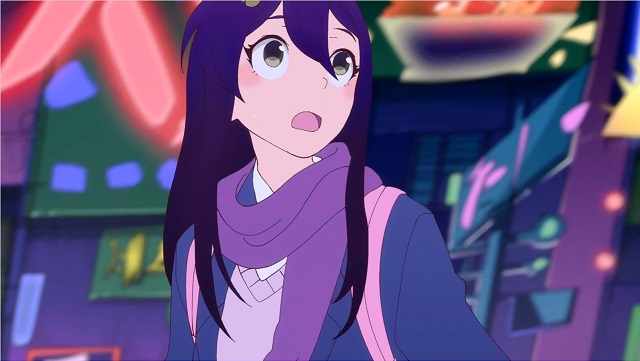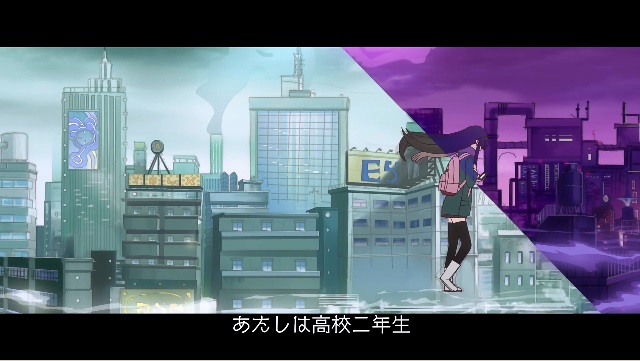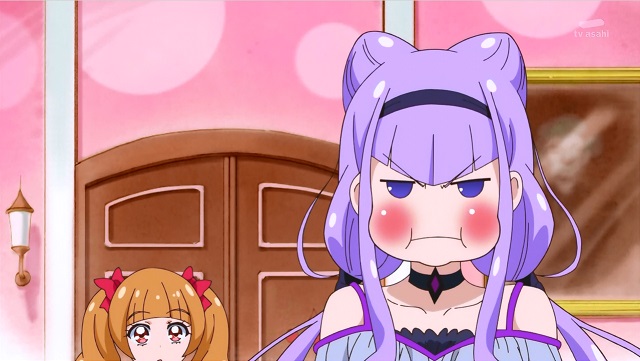Epic Zombie rap battles of history:
Anime does have a tendency to mock hip-hop, that fake sort of yo yo bad rhyming your elderly relatives might also do when talking about *condescending sneer* rap music, but this was rather good.
Epic Zombie rap battles of history:
Anime does have a tendency to mock hip-hop, that fake sort of yo yo bad rhyming your elderly relatives might also do when talking about *condescending sneer* rap music, but this was rather good.
N. K. Jemisin is the first author to win three back to back to back Hugo Awards for best novel:
This is the year in which I get to smile at all of those naysayers — every single mediocre insecure wanna-be who fixes their mouth to suggest that I do not belong on this stage, that people like me cannot possibly have earned such an honor, and that when they win it’s meritocracy but when we win it’s identity politics. I get to smile at those people and lift a massive shining rocket-shaped finger in their direction.
Even if its opening every time reminds me of certain theme song to a magical mannequin movie, I have to be grateful to Legend Of The Galactic Heroes: Die Neue These, if only because it got me off my butt and watching the original series, which I’m currently twothirds through.
Legend Of The Galactic Heroes has a reputation for being difficult, unforgiven even: its first episode drops you almoat straight into a huge space battle while only understanding the barest outline of who is fighting who. And instead of exciting ship to ship combat, it’s mostly serious senior officers staring at electronic maps with the thousands of ships involved reduced to small blips. Seemingly dozens of characters — all men, all in uniform– are introduced and you need to keep your wits about you to follow what’s happening. It sets the pattern for the rest of the series.
Let’s stop a moment to admire just how big an accomplishment Legend Of The Galactic Heroes is. A story that took ten novels to tell was adapted in 110 episodes, one continuous story taking almost a decade, from late 1988 to 1997 to be completed, released not as a television series, but as original video animations for the home video market, on VHS. When it started the Japanese bubble economy was in full swing, when it was finished, it had survived the crash that followed it. And that for a series that relied on none of the traditional selling points of other anime OVA series. No sex, no fanservice, no glamourised violence, just blips on radar screens being extinguished with the occassional reminder of the brutal deaths that accompany it.
Legend Of The Galactic Heroes is a masterpiece of tell, not show. Much of the action consists of various men holding meetings in which they explain the geopolitical and military situation to each other, followed by more meetings determining strategy and tactics for the latest battle. When there are no meetings, the narrator returns, to explain what’s happening. Several times the entire story is interrupted in favour of our heroes watching video documentaries about the rise of the empire or the fall of Earth. There’s a lot of information to ingest, at times it can get a bit dry. Nevertheless, it’s fascinating. There’s a density there, a complexity that you can only get by not being afraid to tell, rather than show.
In many ways, it’s the anti-Weber. David Weber’s Honor Harrington series of space opera has a similar grandiose sweep of history as LOGH, but its politics are barely sketched out while its battles have the flight path of every missile described in loving detail. Legend Of The Galactic Heroes on the other hand goes in depth on the geopolitics, but couldn’t be bothered much with battle scenes. It’s enough to know that the 20,000 of the Galactic Empire are surprisingly defeated by the 13,000 of the Alliance of Free Planets, thanks to an brilliant tactic insight from Yang Wenli.
Watching Legend Of The Galactic Heroes therefore demands concentration. This isn’t a series you can just watch in the background while checking Twitter. Especially if you have to read the subtitles to follow the conversations. I notice that while I can easily marathon a regular anime series 10-20 episodes a day if I got the time, my concentration lapses after only a few episodes. LOGH is hard work, but it’s worth it.
Especially the shipping.
How do you represent your protagonist moving from her mundane everyday world into an alternate reality? To Be Heroine does it by shifting languages.
To Be Heroine is an anime series created by the Chinese animation studio Haoliners. Haoliners its start doing subcontracting work for Japanese anime studios, but which has long since started doing its own shows as well, most of which weren’t very good. To Be Heroine is the spinoff of one of the exceptions, 2016’s To Be Hero, which had a core of new, young talent doing the animation for it. That show was a sci-fi comedy, whereas the new series is more of a isekai fantasy series, with the protagonist crossing over into a strange fantasy city. Isekai or trapped in fantasyland stories are omnipresent in modern day anime, but To Be Heroine does a couple of things different. First, instead of being transported to some standard medievaloid world, our heroine instead is transported to a warped version of her home city. Second, to underscore the transition, she goes from speaking Chinese to Japanese.

As usual in this sort of story, we first get a glimpse of Futaba’s everyday life, while she ruminates on making choices and sometimes having to accept not having any choice, while all the while she prepares to go out and gets dressed. The colouring and lightning is all fairly drab, fitting the rainy day it’s set in. Futaba herself too is a bit drab, clothed in shades of black and grey, her hair a realistic shade of black with even the green of the duvet on the left being a bit flat. The same goes for the other people seen in this sequence. Her parents are clearly older, aged, her classmates like herself look like actual teenagers.

The moment the door closes behind her and she steps out into an alternate reality her hair colour turns purple, her eyes become big and round and her voice becomes cuter and Japanese. The colour and lightning pop, her design is rounder and cuter and in general, everything looks more “anime”. So there’s both a visual and auditory disconnect between the muted, realistic, Chinese speaking mundane world and the cute, colourful, Japanese speaking fantasyland. The contradiction between drab mundane and colourful fantasy is obligatory for most isekai stories, but going so far as to switch language is unique to this series, only possible because we got a Chinese studio doing a series for the Japanese market. And then of course there’s the international market watching it subtitled in English (or your local language). It’s a clever use of language as signifier, but you got to wonder how a Chinese audience will like seeing the boring real world represented by their own language… Or that you can instantly become cute when you speak Japanese!

Setting aside that sort of consideration, what impressed me was the consistency with which the language scheme was kept. Chinese for the real world, including in Futaba’s flashbacks in the fantasy realm, Japanese when she’s talking to people there. And as you can see, the contrast in animation, colouring and lightning between the two worlds is kept consistent as well. Here Futaba literally steps out from her flashback back into the fantasy city.
To be honest, despite the praise it got from sakuga nerds, To Be Hero was too crude for me personally, so I never watched it beyond the first episode. To Be Heroine, its successor, looks to have both the incredible animation and a much better story and setting. If it can keep up the quality of this episode, it will be one of the best series of this season.
No really? How is Precure this good?

To recap: Precure is a long running series of magical girl shows that has put out a new series each year since 2004 following roughly the same formula each time, though each series bar two stands on its own. There’s a team of two or more young teenage girls who’ve gotten Precure powers from a magical talking animal mascot to defend the Earth against some sort of primordal evil, which mainly manifests in fighting the monster of the week while also having to deal with more mundane problems. For more detail, see my review of Fresh Precure, which aired in 2009. Hugtto Precure is the latest installment, started last February and so far has been rather good, episode four being a particular highlight, but I think this week’s episode topped even that one.
Sakugablog has the nitty gritty of just who is responsible for making episode fifteen so great and mentions that this is actually supposed to be a budget saving episode. Which just goes to show talented creators can do a lot even under strict limitations. But what sets this episode apart from regular episodes is not just the good use of limited animation, but the focus on two supporting characters. There’s Lulu, the enemy infiltrant now living with main Precure Nono Hana, who is sent out to buy eggs and runs into Aisaki Emiru, first seen in episode nine, who introduces herself as Cure Emi-ru protecting the world through careful prevention. Emi-ru is great, trying to do all the usual stuff Precures do, in which the show obliges her by using the same musical and animation cues it uses for the real Precures. Intrigued, Lulu follows her (or rather, Emi-ru keeps clinging to her warning her of increasingly unlikely dangers she could encounter as she makes her way to the supermarket to buy eggs) and watches as Emi-ru attempts to help people and fails. Lulu then points out that even if she failed, at least she made the people she helped happy.
Lulu and Emi-ru hit it off immensily and it’s great seeing the fired up Emiru trying to explain things to the stoic Lulu. As the former keeps going into these flights of fancy, the latter keeps shooting her down, but not in a mean way. Rather, she seems genuinely concerned for her when her brother comes in to lecture Emiru on how it’s improper for girls to play the guitar. Lulu defends Emiru by continuing to ask him who died and made him boss as well as why playing the guitar is unseemingly, doing that in the same cold, logical way she has done everything this episode. Only when the brother flees, does Lulu reveal some genuine emotion and upset. Which also leads to the most adorable pout in Precure history.

The stoic, logical, emotionless girl is a staple in anime ever since Neon Genesis Evangelion. But what struck me here is how much characterisation and character growth the series could put in one episode. There had of course been hints before that Lulu wasn’t as emotionless as she first seemed and she’s a prime candidate for mid-series conversion to the good side, but in this episode we learned she had a sense of humour, was able to make friends and get angry on their behalf and it all happened naturally. That’s what makes this such a good episode even without the brilliant animation to go along with it. Both Lulu and Emiru gained a lot of depth in what was nominally a gag episode and while this episode was incredibly funny, it also adhered to the standard formula of a Precure episode, showing how much the staff could fit in its limitations.